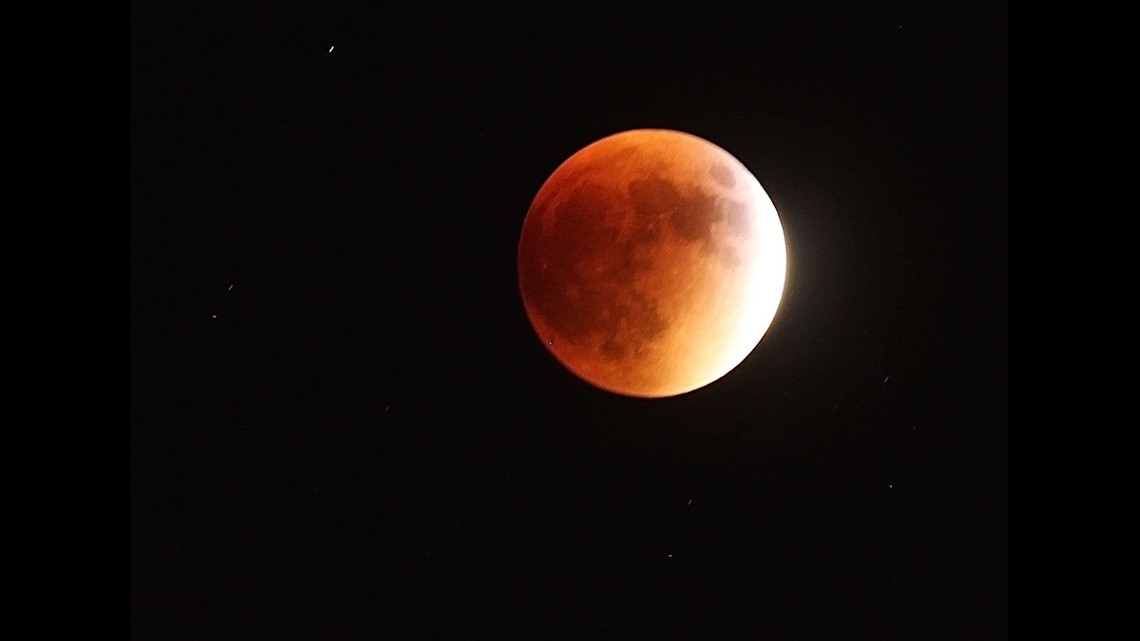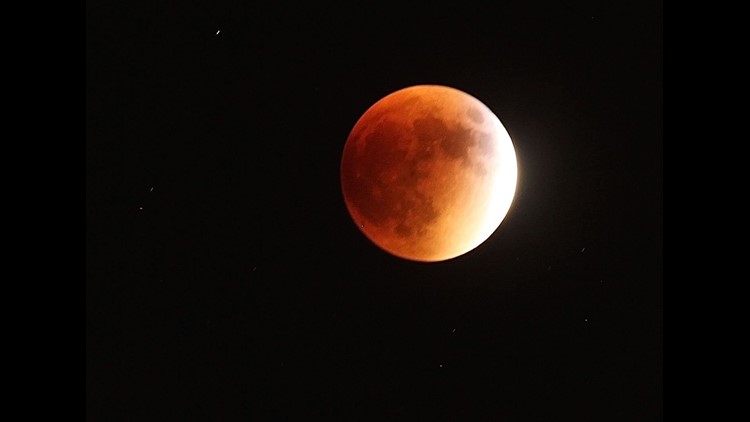

The sun, the Earth and the moon lined up in a row to put on a light show in Sunday’s night sky, and people around the world looked up to watch the lunar eclipse.
It was a special one for at least two reasons.
First, this moon was a supermoon. It happened to be at perigee, the spot in its slightly oblong orbit that brings it closest to the Earth. And that made it look particularly large in the sky.
The last supermoon total lunar eclipse occurred 33 years ago.
Second, this lunar eclipse was the last in a series of four spanning two years, a phenomenon called a tetrad. Those can happen a couple of times in a century, or they can make themselves very rare, skipping over a few centuries.
Blood moon
Some people call the totally eclipsed moon a “blood moon” for the rusty red-orange color it turns once it is completely in the Earth’s shadow. But that shadow isn’t perfect, and faint sunbeams sneak around Earth’s edges on all sides in the color of a sunset.
It bathes the moon in a brilliant, warm hue.
Brendan McInnis in California loved it. He made a video and tweeted out a GIF. “#SuperBloodMoon looked amazing from San Francisco even with clouds,” he wrote to the image.
Overcast skies canceled the show over much of the United States, but NASA streamed it live for those who might otherwise miss it. And they asked observers to post their own photos, which can be seen in answer to @NASA’s tweets.
Some others who saw the eclipse found it less exciting than the hype that preceded it.
“What people expect their pictures to look like tonight vs what they will look like #SuperBloodMoon,” one user tweeted with two pictures for comparison — the first a huge, red ball, the second a tiny dot.
In Jerusalem, a CNN team saw Christians gathered near the Temple Mount late Sunday watching the eclipse and singing songs, holding hands.
“It’s a beautiful sight in the nighttime sky,” astronomer Mark Hammergren. “It’s a way of connecting us to the universe at large. It gives us this view that there’s a bigger picture than just what we’re concerned with in our daily lives.”
The next supermoon eclipse isn’t due until 2033.



